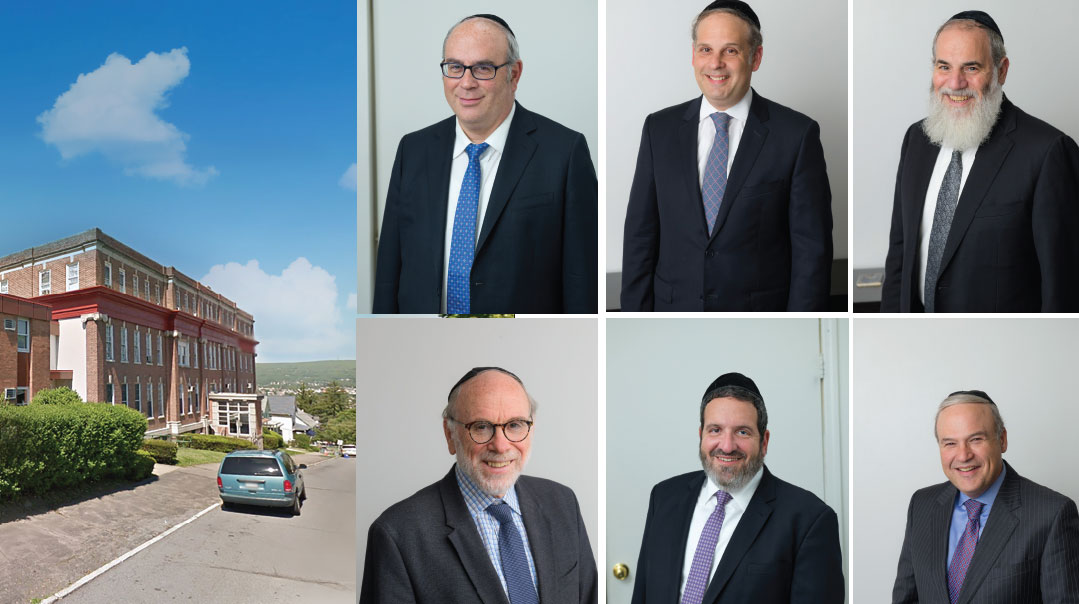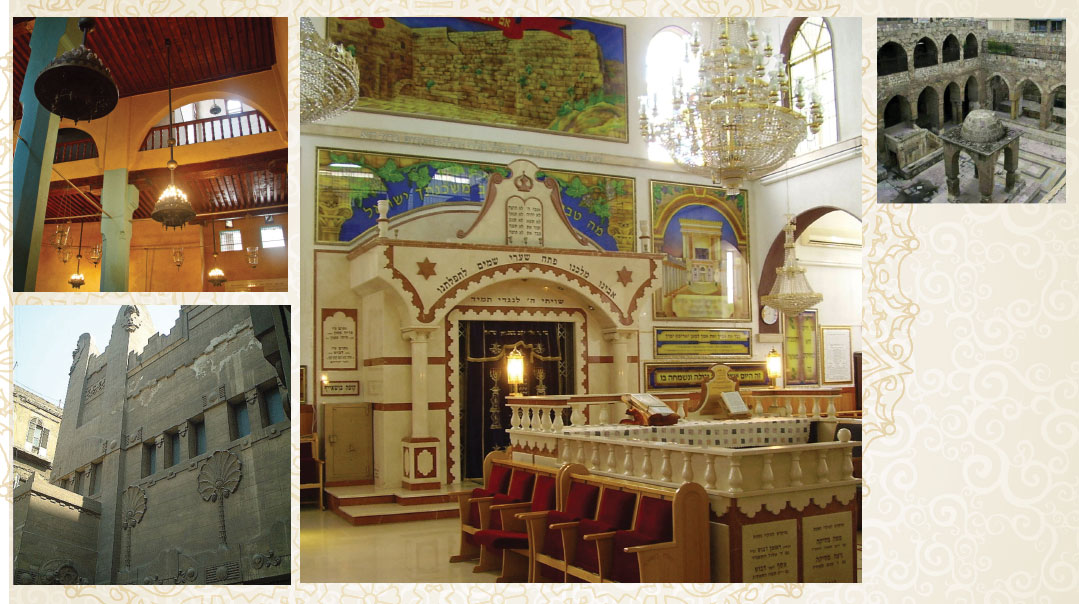A Candle Burns Bright


Shabbos Project participants from around the globe to give us a taste of their experiences. As you will discover, it was truly a moment of global unity for Klal Yisrael.
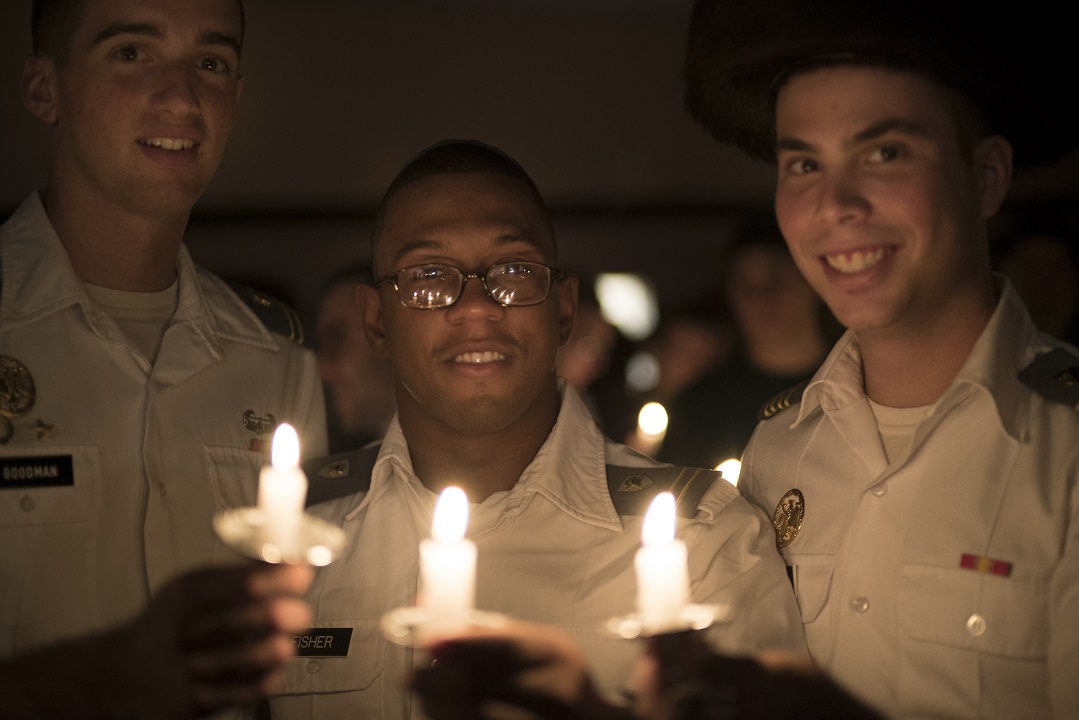
(Photos Courtesy of the Shabbos Project)
W
hen’s the last time 1 million Jews did anything together?
The enormity of last week’s Shabbos Project happening wasn’t just that religious, once-a-year, lightly affiliated, and non-observing Jews sat around the same Shabbos table, sang the same Shabbos zemiros (with the aid of a booklet made available on the Shabbos Project website), and enjoyed sweet, satisfying divrei Torah alongside total strangers, but that any of this happened at all.
Rabbi Warren Goldstein, the Chief Rabbi of South Africa and the event’s impresario, has likely managed to get more Jews celebrating Shabbos at the same time than at any point in recent history, an achievement all the more admirable because many of the people participating in the Shabbos Project events had so little experience, if any, with an authentic Shabbos.
In Belarus, hundreds of women came together to make challah last Thursday night in the Pinsk dining room of Rabbi Baruch Shofnos. With tears in her eyes, a 70-year-old woman explained that she had never made challah before. In Montreal, the chassidish community of Outremont opened its doors to its hipster neighbors, and in the process, two communities with seemingly so little in common shared a precious moment together. On the other side of the globe in Melbourne, men gathered for a pre-Shabbos herring and whiskey tasting (to sate the stomach before the neshamah) and women of every level of religious observance covered their hair with scarves alongside their frum sisters, and waved in the Shabbos Queen.
In all, organizers say that no less than 1 million Jews in 460 cities and 64 countries baked challah, attended a Shabbos meal, davened at a shul, or attended a Havdalah concert.
After a year of planning, Rabbi Goldstein said he felt “excited and grateful” with the results of this year’s events. “What’s been remarkable has been the depth and breadth of the Shabbos Project,” he said in an interview from South Africa.
Though the numbers are impressive – 5,000 women at a single challah baking in Miami, 2,500 in Toronto, four hotels booked out in Mexico City accommodating those who wanted to be within walking distance of a shul – the Shabbos Project also touched people in smaller Jewish cities like Ottawa, Rotterdam, and Hong Kong. “No one could have imagined that we would have this level of response,” Rabbi Goldstein said. “You can see the power of Shabbos and its connection to Klal Yisrael, because it’s not a phenomenon that could be predicted in rational terms.”
With the experiences still fresh, we asked participants from around the globe to give us a taste of their Shabboses. As you will discover, it was truly a moment of global unity for Klal Yisrael.
—Gershon Burstyn
Ramat Beit Shemesh
Breaking Bread & Stereotypes
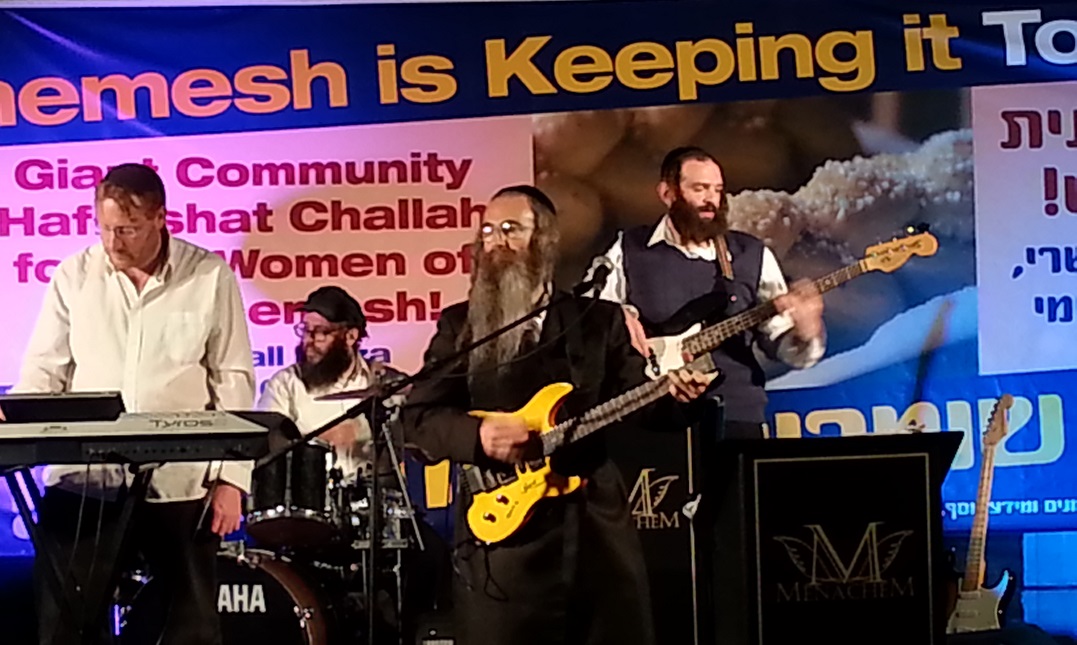
O
ne of the beautiful things about living in a community like Ramat Beit Shemesh is that you really feel Shabbos. As olim (and so many of us here are), we appreciate how special it is that there are no cars on the road, that everyone around us is celebrating Shabbos just like us.
But if you live in an almost 100 percent religious community and you want to participate in the worldwide Shabbos Project, you need to go digging for guests. Luckily, I had someone else who did the digging for me. Sharon Isaacson, the woman from our shul who organized the programming for this Shabbos, broadcast through all channels she could think of that the RBS community was anxiously seeking guests. Through a Jerusalem-based support group for single mothers, which sent out the message on their e-mail list, Meirav,* from Petach Tikvah, and her six-year-old son, arrived Friday afternoon at my door.
She decided to come because it seemed like a cool thing to do. How often did she have the opportunity to see such a foreign community up close? But she had her apprehensions and she made them quite clear at the outset.
Number one was the location.
“Ramat Beit Shemesh? Are you kidding? That’s where they throw stones at people like me!”
Unfortunately, she wasn’t the only guest who voiced that concern, and Sharon had to reassure her that the negative media stereotype was far from the reality, certainly in our warm, welcoming anglo-olim community.
Her second concern was that we were out to be mekareiv her, and she declared, several times throughout Shabbos, that she had no interest in being “converted.” She was coming to give her son an interesting experience, v’zehu.
As it turned out, her son was quite a handful. A boy with severe sensory and hyperactivity issues, he could not sit still, and my whole family pitched in to keep an eye on him. The poor mother, who, as a single parent, spends her life caring for her son, was so grateful to us, and to the other family who “shared” them (we each had her for one meal), for helping to watch him, and even giving her a chance to rest on Shabbos afternoon.
She sang Shalom Aleichem with us, obviously familiar with the song, and appeared emotional as she sang. She told us that she lights Shabbos candles every week, and is also careful not to use fire on Shabbos — and yet, she kept saying, she was not interested in any more Shabbos observance than she was already doing. She had her hands full already with working as a housecleaner during the week, and caring for her difficult son, and she couldn’t take on any more “burdens” right now in her life. So we were very cognizant, throughout the Shabbos, that our job was not to convince, but to give her the warmth and acceptance that she obviously craved.
Our entire community rose magnificently to the occasion. She expressed hesitancy about accompanying me to our shul’s oneg Friday night, since she was wearing pants. “I’m not putting on a skirt,” she was quick to add. “That isn’t me.” Yet she thought she might be looked down upon for wearing pants to shul. I assured her that it’s okay to come as she is — and it was.
What really blew her away, however, was not the special oneg and Havdalah or any of the other programming for this unique Shabbos, but rather the things that we in the frum community always do — and do so well without even thinking about it. She loved the fact that her son was able to run back and forth between the neighbors’ houses and be welcomed automatically by their children as a playmate. She was wowed by the fact that we were opening up our home to total strangers as guests (this is something that always impresses non-frum Jews, when we host them). She even enjoyed that there were no cars on the streets, that there was such a peaceful, Shabbosdig atmosphere that she doesn’t get in her city life in Petach Tikvah. It was the togetherness, the sense of community that she kept exclaiming over.
Her son, for his part, enjoyed himself to no end. He spent the entire Shabbos playing with my children and all the neighbors. But the highlight came at Shalosh Seudos. While Meirav sat in the women’s section, her son, who was with my husband, proceeded to attach himself to a chassidish rabbi who runs a kiruv organization. I don’t know how it happened exactly, but it was simply unbelievable to watch him. He sat next to this rav, as, for a half hour straight the rav spoke to him about believing in Hashem and told him stories from the Torah. “He probably fell asleep,” Meirav said, unable to believe that her son could listen for so long to one man speaking. But he wasn’t asleep — he was utterly rapt by what the rav was telling him, and was so enthralled by him that when it was time to go home, the boy became hysterical, clutching the rabbi’s legs and wailing that he didn’t want to leave.
In a certain sense, the Shabbos with Meirav ended as it began, with her insisting that, despite her son’s fascination with this rabbi, despite her appreciation of all that she experienced, she has no interest whatsoever in becoming Shabbos-observant at this point in her life. But in a different sense, she was changed, as were we, by the end of this Shabbos. She kept enthusing about our wonderful, warm community (I had wondered initially about how she, a regular Israeli, would take to the idea of our “Little America” ghetto, with everything in our neighborhood in English, but she was charmed by the fact that we olim were able to create a comfortable haven for ourselves in Israel), and eagerly grasped at our invitation to come back again.
And we, for our part, learned that, to reach across religious and cultural barriers, you don’t need penetrating speeches, or even to speak the same language at all. All you need is a healthy dose of warmth and acceptance for your fellow Jew.
—As told to Gila Arnold by Aliza Rosenstein
Melbourne, Australia
Patience Pays Off
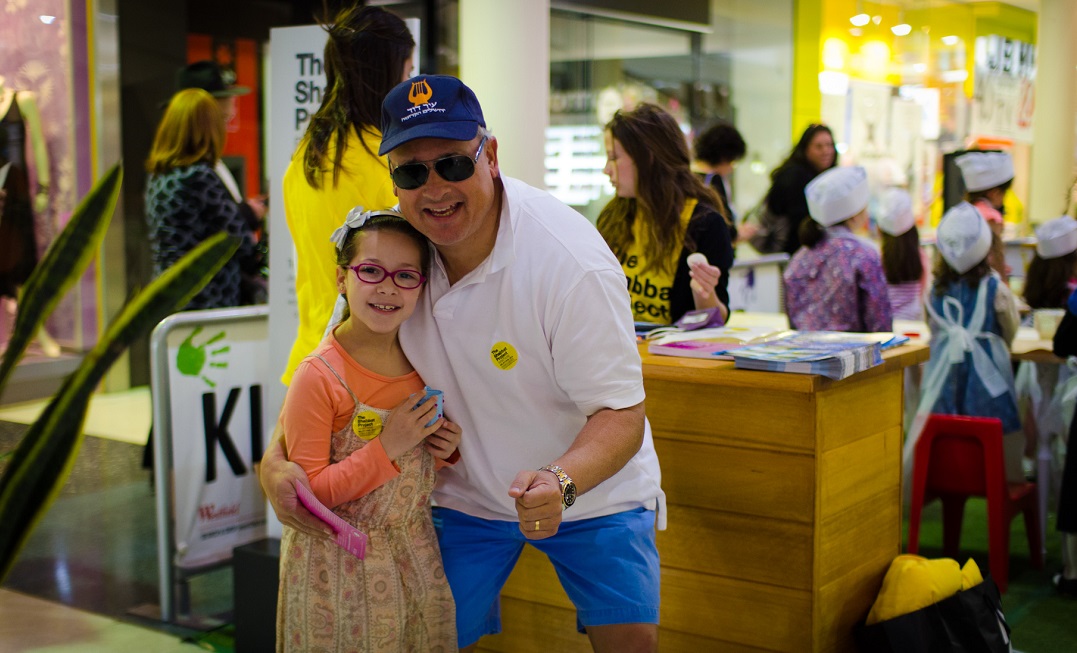
W
hen my husband was asked to cochair the Melbourne Shabbos Project, never in my wildest dreams could I have imagined that it would touch the hearts of so many Melbourne Jews from all walks of life.
Approximately 15,000 Jews celebrated Shabbat in Melbourne — about a quarter of our city’s Jewish population — most of them for the first time.
The festivities began on Erev Shabbat when we invited the men to our home for a herring and whiskey tasting, followed by Friday night services at a Chabad House around the corner.
While the men davened, the women gathered together, sitting outside and relaxing until it was time to light candles.
These ladies were not your typical Shabbat observers. Some wore skirts that would not be found in an Orthodox synagogue, along with high-heeled designer shoes. But no matter. When it came time to light candles, we covered our hair with scarves and brought in Shabbat, united in our Jewish womanhood.
About 40 of us sat down to dinner together, but as good as the food was, the highlight for me was my husband singing Eishes Chayal and one of the participants’ devar Torah.
David told us that he was born frum but the Shabbos Project had given him an injection of excitement into his spiritual life. He told us he was inspired by all our guests who were keeping Shabbat for the first time.
The devar Torah was followed by Rachel, my ten-year-old, performing magic acts. Everyone thought it was hysterical. One of my guests told me it was the first time in many years that her 20-year-old son had mixed socially with Jewish people.
The next day, everyone rushed out to shul while I stayed behind. So it was a good thing that Rachel the magician told me there was a surprise waiting for me at shul.
I made it just in time to hear my oldest son Phillip reading from the Torah. It was a lovely surprise. Of course I shed tears of joy and pride.
After davening, there was lunch in shul for about 100 guests. I was asked to speak and here’s a portion of what I said:
If you picture something in your mind, you can make it happen. I am referring to two visions here.
First, I am referring to my husband Simon’s vision to encourage Melbourne Jewry to participate in Shabbat on a scale never seen before.
You only needed to be at the Challah Bake on Thursday night to feel the incredible energy and excitement of 2,500 Jewish women preparing challah for Shabbat together, as one, to understand the level and depth of participation I am talking about.
The second vision is my own.
Part of this vision came to fruition about 15 years ago when I turned things a little upside-down with my family and friends.
Within 24 hours our kitchen became strictly kosher, pots were boiled, glassware soaked, and Rabbi Avrohom Goldberg was seen wielding a flame to purify my kitchen.
This was not really done in the heart of our neighborhood back then. Some were a little perplexed!
I was questioned, even inquisitioned!
Everyone wanted to know: What was wrong? Was I terribly unhappy? Was something wrong with them?
What was it?
Of course, it was clearly Hashgachah pratis. But for the people who struggled with their belief in G-d, what could I say?
I will say that I clearly had some wake-up moments, those moments in life when the hammer hits you on the head, or the bell rings in your brain.
It was at one of those moments that Shabbat became fundamental to our family life. So today, my husband Simon, my children, and some friends are keeping Shabbat with me.
Patience has paid off!
After lunch my husband, Rachel, and I walked about three kilometers to Caulfield Park. My older daughter Ashleigh had coordinated all the youth movements to join together in celebrating a halachic Shabbat. Seeing hundreds of these teenagers together relaxing in the park was incredible. It was a beautiful sunny day. Some of the kids were listening to a devar Torah, some were learning Tai Chi, some were singing, some were reading, a group was using hula hoops. It was amazing and inspirational to see them all together and hear about some of their Shabbat experiences. After this a large group went to a nearby shul for Seudah Shlishit. Everyone was singing, eating, and talking all at once.
Then we went back to Caulfield Park for the first worldwide communal Havdalah concert for this year’s Shabbos Project.
Everyone was full of energy, dancing and rocking to the music. Around 6,000 people were there to say goodbye to the most amazing Shabbat ever. When my husband lit the Havdalah candle, the men on the balcony broke out into the hora. It was beautiful to see.
Now I am going to settle back to reality. I will go home, clean up after my 40 guests, and take a well-earned rest from the Shabbos Project. But not before being duly inspired.
—Lisa de Winter, hostess and wife of cochair of Shabbos Project, Melbourne, Australia
Panama
Happiness Uncontained
A
s we approached the launch date for the Shabbos Project, the words “Shabbos Project” and “Keeping it Together” could be heard everywhere in our small community. In e-mail conversations and social media, everyone was talking about what their kids would do on that day, how to make recommended desserts and salads — even how to create beautiful flower arrangements.
As the Shabbos Project posted pictures on its website of participants in every part of the globe, the excitement and expectation only grew stronger. The sense of uniting with another person, or another family, or the whole Jewish world was for some a way to connect to their neighbors and commit to a new mitzvah, while for others it was nothing less than a sign of Messianic times.
And then the day arrived. As the sun came down on October 24, we could let out a sigh of relief that hundreds of people in our community of 12,000 would be hosted by a family for Shabbos. As people streamed into shul on Shabbos morning, a euphoria was growing as people realized that we were really doing it: keeping Shabbos together as a community.
We were living it. There was electricity in the air. Smiles on everybody’s faces. Happiness uncontained. A feeling of brotherhood.
The beautiful hall prepared to host the community members was decorated as never before, and people were amazed at the richness of the program we had planned. From davening, to kiddush with a complete lunch, to Seudah Shlishis and classes, to Havdalah and Melaveh Malkah. The numbers were far greater than for any normal Shabbos. The community center was bursting with life — children of all ages, adults, and seniors citizens.
There was a sense of shleimus, of a unity and sanctity that has never before been felt here.
In parshas Noach we learn that Noach “matza chein b’Einei Hashem.” We hope the entire Jewish world has found, with the Shabbos Project, chein b’Einei Hashem and that we will soon rejoice in a world “shekulo Shabbos.”
—Daniela Lowinger was a general coordinator of the Shabbos Project in Panama.
The Storm Before the Calm
Mishpacha reporter Eliana Cline visits the Shabbos Project headquarters just days before a year’s work comes to fruition.
T
he sound of furiously tapping keyboards and ringing phones fills the air. Weaving my way through boxes of Havdalah candles, posters, and tables piled high with booklets, I enter the Johannesburg office of the Shabbos Project. The staff is huddled around tables, their eyes glued to their laptop screens. A massive map of the world occupies the back wall, faced by clocks with every time zone.
It’s hard to believe that this small office comprises the headquarters of the Shabbos Project, a venture that transcends language, time, culture, religious observance, and political affiliation. Yet for the remarkable team at the head office, coordinating the entire operation has been far from simple.
Until the last moment, language barriers remain a huge challenge. All material has had to be translated into eight languages to ensure that everyone can participate. In one corner, an employee gesticulates impatiently into the phone. “I need the footage” she says slowly, instructing a Chinese cameraman to upload the video footage of the Hong Kong challah back to the project’s website.
Across the city, the masterminds of the project, including Chief Rabbi Warren Goldstein, Rosie Hollander, and Laurence Horwitz, gather around a trestle table under a majestic oak tree on the lawns of the local military museum. Rabbi Goldstein, who conceived this groundbreaking initiative, has just stepped off the plane from Israel where he was on Israeli TV and radio talking about the Shabbos Project. The excitement in his eyes is contagious as he stands on the brink of what he aptly describes as “a historic moment for Klal Yisrael.”
Rosie Hollander, the overall project manager, is remarkably calm and collected. “The craziness, the panic, and the stress — that was past the six months. We have had to learn to work with different communities and their internal politics globally, each demanding their own sensitivities. But now, I am just filled with awe,” she says, glowing with happiness. “We are reaching the culmination of all our efforts, and seeing what is taking place globally in ways we did not expect or predict at all is nothing short of awesome.”
Laurence Horwitz, the project director, describes himself as “amped.” He explains that he had just received an e-mail from a tiny town in Holland with fewer than 100 Jews that plans to participate.
Back in the office, e-mails are pouring in with last-minute requests and events taking place globally. Social media activity is soaring, demanding replies around the clock. Thousands of people are logging onto the official site daily while the team is frantically collating live video footage and photographs from the many challah bakes across the world and final media communications are being prepared.
The success of this project is no doubt thanks to the tireless and never-ending devotion of the South African team. The sheer volume of responses and unexpected curveballs demands every ounce of perseverance and devotion. Yet as the last e-mail is answered and the last laptop put away, the team has just one final job — to join Klal Yisrael in celebrating the eternal gift of Shabbos in all its glory.
Manchester, England
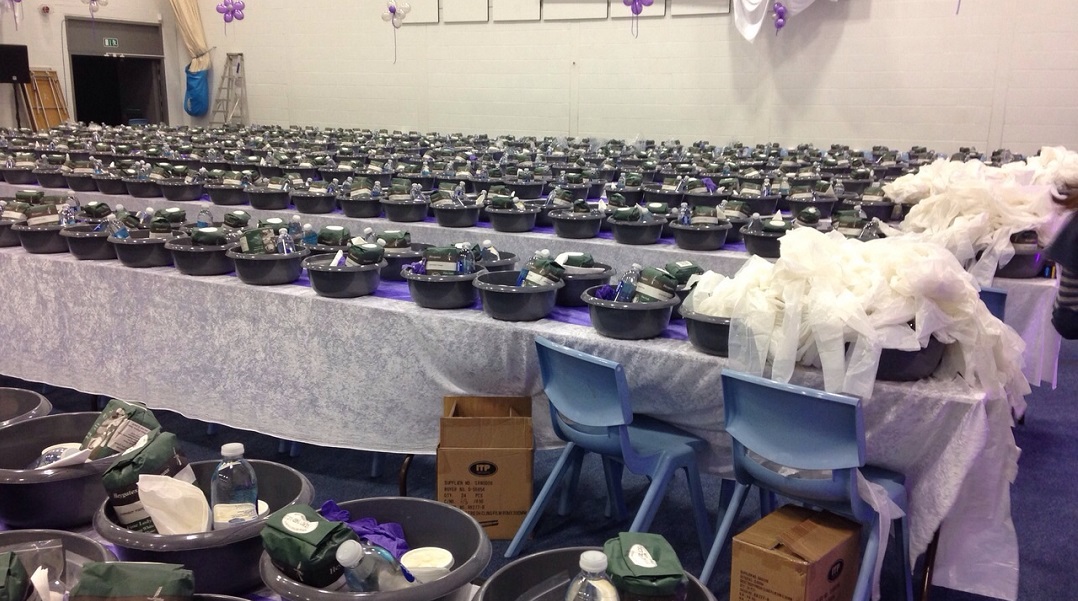
I
can still remember how this all started.
About a year ago, the vice-president of our shul walked in to my office and asked: “Have you read the articles in Hamodia and Mishpacha? Did you hear about the Shabbos Project in South Africa? What a fantastic idea and event!”
I had, of course, heard about it. The media and the Internet were heaving with reports of the amazing Shabbos the entire South African community had experienced. We decided right then that we would participate next year.
Within a few weeks we got the call from South Africa and the ball started rolling. Schools, shuls, youth organizations, and the student population were all contacted, as we wanted to involve as many parts of the community as possible.
It all started on Thursday night with two amazing challah bakes in the northern and southern parts of the city attended by 1,350 women. As I sat in my living room trying desperately to put my kids to bed, I received a message from my wife that the atmosphere was just unbelievable. At the same time, my mother called me from Vienna to say that their challah bake had been a great success and that so many people from varying backgrounds had come out to support the event. E-mails and pictures started flooding my phone with the most amazing comments from around the world.
It was at that point that it seemed like the entire world was uniting to do the ratzon Hashem! Buenos Aires, Mexico, Baltimore, Melbourne, and many other communities kept their reports coming. I felt such a pride in being a Jew and being blessed with our Torah.
When I spoke to one of my congregants the next day he just said, “It’s so special to be part of this,” and then he turned away and started to cry. One woman who was there told me that a nonreligious woman came over to her and said, “Can I give you a hug? I have been crying all night and I feel after tonight I need to change my life around….”
Friday morning was Rosh Chodesh. As I was saying Hallel, I couldn’t help thinking how appropriate it was to be singing and praising Hashem on a day when the entire Jewish world was waking up buzzing about Yiddishkeit.
The rest of the day flew by with all sorts of last-minute preparations; then it was time to go to shul. As I drove there, I saw entire families walking to our shul. The feeling of pride and anticipation for the event started to grow stronger.
Our shul is made up of a majority of Jews who do not keep Torah and mitzvos fully but will not affiliate themselves with the Reform or Conservative movements. They prefer to be seen as people who believe in Orthodoxy, but they themselves are not observant. It therefore came as a big surprise to them to see 15 Belzer chassidim in their full regalia waiting to daven with them. The chazzan went up to the amud and started singing and the chassidim formed a semicircle around him to act as his choir. After Mizmor L’David, a spontaneous dance started. The entire shul was singing and dancing and our members were putting on shtreimels handed to them by their chassidic owners. Our Friday night davening took an hour and 45 minutes and I did not hear a single complaint. Later, at the seudah, I heard from a few of my members that they had never experienced such joy during a tefillah.
That evening, 300 people sat down for a seudah at the shul. We had never once sold out any event before this. One of my less-than-regular members commented that this was the first time Judaism had tried to market itself to the wider community in an attractive and global way, and the results were amazing. This made me realize, once again, that as frum Jews we have so much to give and share. We just have to find a way to make it attractive to those who don’t see its inherent sweetness.
On Shabbos morning, we had even more people than on Friday night. There were no chassidim for this tefillah, but the shul was even fuller and people sang along more proudly than they normally do.
As the day was drawing to an end, I looked out the window and realized that Shabbos was almost over. I was so overcome by emotion that I almost started crying. Even I had changed and moved forward on this Shabbos.
Motzaei Shabbos ended with a concert in our shul hall that was open to the entire Manchester community. We made Havdalah and sang songs with hundreds of people. The final song was MBD’s “Just One Shabbos.” I have never seen a crowd sing that song with such feeling, and I’m sure they are all looking forward to next week’s Shabbos in great anticipation.
— Rabbi Dovid Eisenberg is the rav of the Prestwich Hebrew Congregation in Manchester and was cochair of the citywide Shabbos Project committee.
Montreal, Canada
Bigger Than Ourselves
M
assive as the Shabbos Project was in scope and impact, the lessons it imparted to us — about ourselves — were no less important. While unaffiliated brothers and sisters learned about serenity and rest, about challos, cholent, and besamim, we learned who we were.
Our neighborhood of Outremont, the core of Montreal’s chassidish community, borders the hipster enclave of Mile End, a stronghold of artists, musicians, and students. From the Thursday night challah bake, through Shabbos itself, culminating with the spirited Havdalah, we saw the willingness, even determination, of chassidishe families who wanted to reach out, to host guests, to interact with other Jews and draw them close.
It was inspiring for us to see how deep the wells of achrayus run, to see homes where the residents barely speak English, where Internet and secular media are foreign, where contemporary culture is an alien language, open their hearts and homes wide to their brethren, desperate to connect them to the morashah kehillas Yaakov.
Lastly, we learned about the power of achdus, and how much various streams of Orthodox Judaism with slight differences between them can accomplish when they come together for a cause bigger than those differences, and how this couldn’t have happened without each and every one of us.
—Chesky Reiss is a Belzer chassid in Montreal’s Outremont neighborhood.
(Originally featured in Mishpacha Issue 532)
Oops! We could not locate your form.







